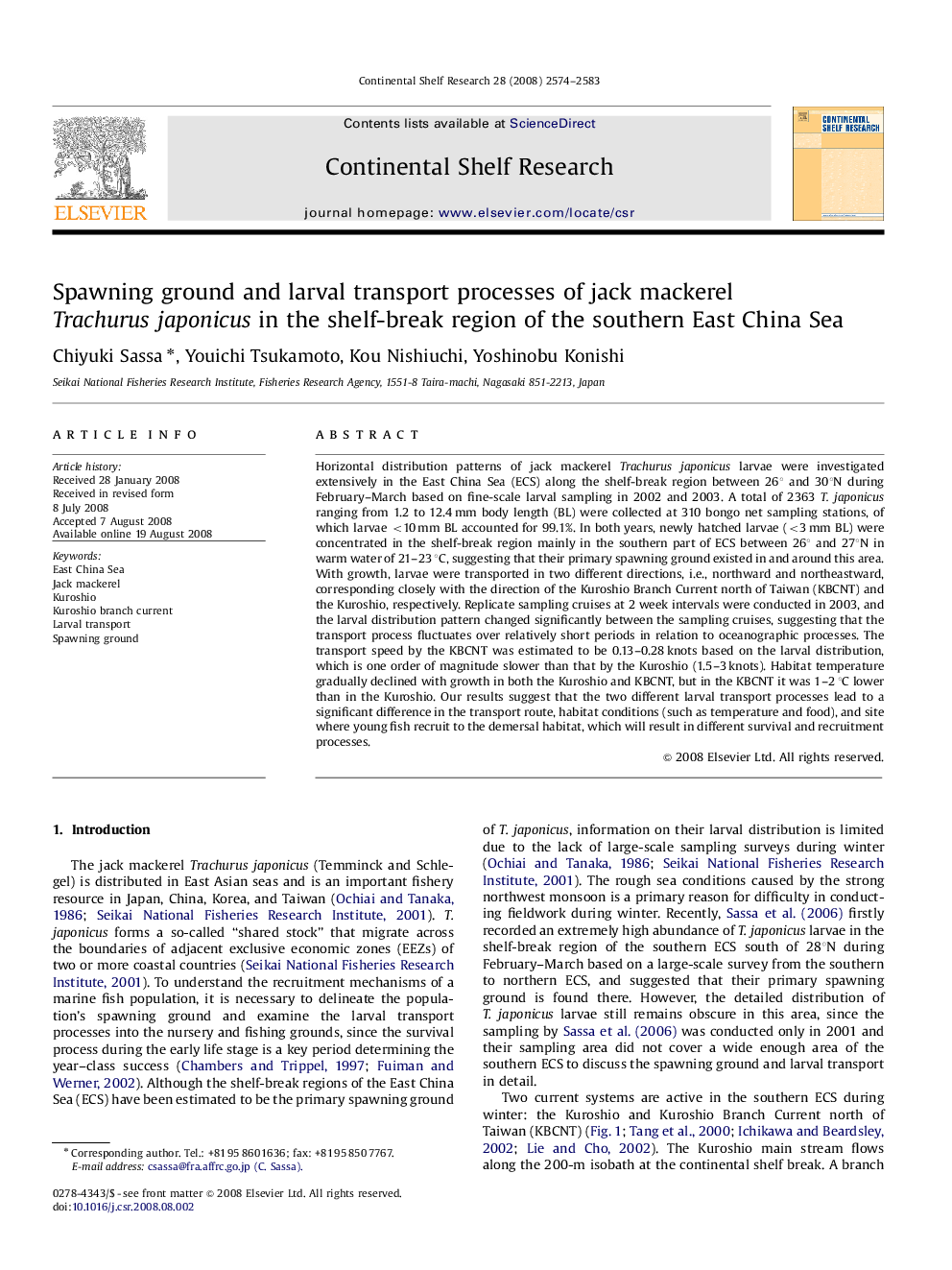| کد مقاله | کد نشریه | سال انتشار | مقاله انگلیسی | نسخه تمام متن |
|---|---|---|---|---|
| 4533411 | 1325190 | 2008 | 10 صفحه PDF | دانلود رایگان |

Horizontal distribution patterns of jack mackerel Trachurus japonicus larvae were investigated extensively in the East China Sea (ECS) along the shelf-break region between 26° and 30°N during February–March based on fine-scale larval sampling in 2002 and 2003. A total of 2363 T. japonicus ranging from 1.2 to 12.4 mm body length (BL) were collected at 310 bongo net sampling stations, of which larvae <10 mm BL accounted for 99.1%. In both years, newly hatched larvae (<3 mm BL) were concentrated in the shelf-break region mainly in the southern part of ECS between 26° and 27°N in warm water of 21–23 °C, suggesting that their primary spawning ground existed in and around this area. With growth, larvae were transported in two different directions, i.e., northward and northeastward, corresponding closely with the direction of the Kuroshio Branch Current north of Taiwan (KBCNT) and the Kuroshio, respectively. Replicate sampling cruises at 2 week intervals were conducted in 2003, and the larval distribution pattern changed significantly between the sampling cruises, suggesting that the transport process fluctuates over relatively short periods in relation to oceanographic processes. The transport speed by the KBCNT was estimated to be 0.13–0.28 knots based on the larval distribution, which is one order of magnitude slower than that by the Kuroshio (1.5–3 knots). Habitat temperature gradually declined with growth in both the Kuroshio and KBCNT, but in the KBCNT it was 1–2 °C lower than in the Kuroshio. Our results suggest that the two different larval transport processes lead to a significant difference in the transport route, habitat conditions (such as temperature and food), and site where young fish recruit to the demersal habitat, which will result in different survival and recruitment processes.
Journal: Continental Shelf Research - Volume 28, Issue 18, 30 October 2008, Pages 2574–2583